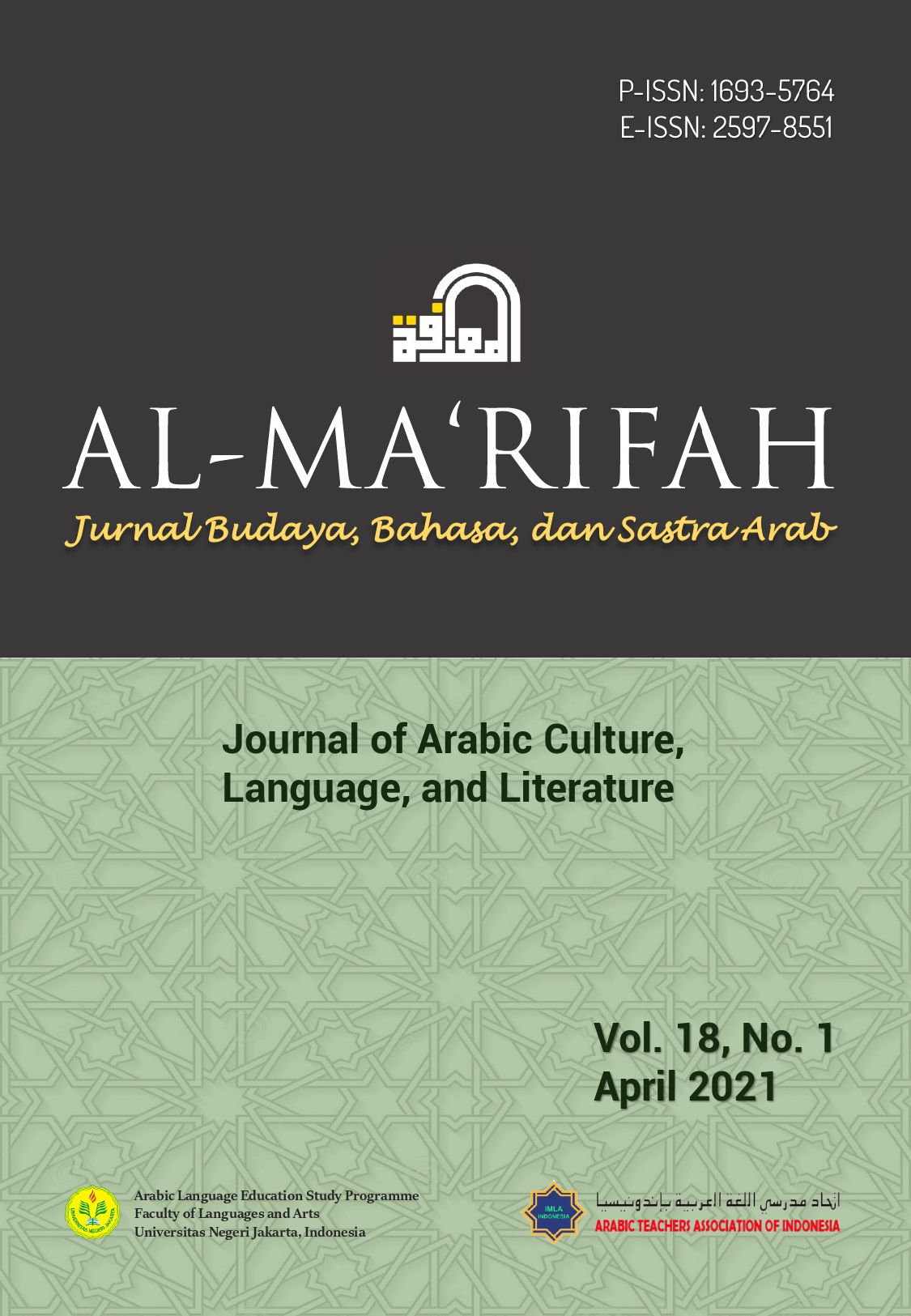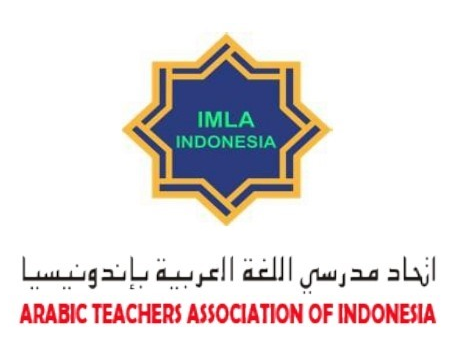Makna Fonemik dalam Semantik Arab: Ontologi, Epistemologi, Aksiologi
DOI:
https://doi.org/10.21009/almakrifah.18.01.06Keywords:
Phoneme, nabr, tanghīm, semanticAbstract
This study aims to provide an understanding of the phonemic meaning (dalālah ṣawṭīyah) in Arabic semantics. To provide an understanding related to dalālah ṣawṭīyah, this study carries out its research based on a philosophical framework of thought consisting of ontology, epistemology, and axiology. It can be concluded that the discussion of this research broadly discusses the ontology or nature of ṣawṭīyah, its epistemology or method, and the axiology or function of the branch of the discussion of semantics. This research is based on a literature review. In analyzing data obtained from the literature review, this study used qualitative methods. This research has revealed the nature of sound, how sound works, and the function of each sound method in the Arabic interpretation process. This research concludes that the sound in the dalālah ṣawṭīyah has an important role in determining meaning in all language structures starting from Arabic words, phrases, and sentences. The method of sound work in giving meaning to Arabic can be in the form of differences in phoneme sounds, sound stress (al-nabr) in syllables or words, as well as intonation (al-tanghīm) that occurs in a phrase or sentence.
References
Anggito, A., & Setiawan, J. (2018). Metodologi penelitian kualitatif. Sukabumi: CV Jejak.
Anīs, I. (1975). al-Aṣwāt al-lughawīyah. Cairo: al-Maktabat al-Anjlū al-Miṣrīyah.
Anīs, I. (1976). Dalālat al-alfāẓ. Cairo: al-Maktabat al-Anjlū al-Miṣrīyah.
Bahrum. (2013). Ontologi, epistimologi, aksiologi. Sulesana: Jurnal Wawasan Keislaman, 8(2), 35–45. doi:10.24252/.v8i2.1276
Bashar, K. (2000). ‘Ilm al-Aṣwāt. Cairo: Dar Gharīb.
Fromkin, V., Rodman, R., & Hyams, N. (2017). An introduction to language, (11th ed.). Boston: Cengange Learning Inc.
al-Fākhirī, Ṣ. S. A. (n.d.). al-Dalālah al-ṣawṭīyah fī al-lughah al-‘Arabīyah. Alexandria: al-Maktab al-‘Arabī al-Ḥadīth.
Hādif, B. S. (2009). al-Dalālah al-ṣawṭīyah ‘inda Ibn Jinnī min khilāl kitabih al-Khaṣā’iṣ. Majallat Ḥawliyāt al-Turāth, 9, 141–162. Retrieved from https://annales.univ-mosta.dz/index.php/180.html
Ibn Jinnī. (1952). al-Khaṣā’iṣ (2nd ed.). Dār al-Kitāb al-‘Arabī.
Iriani, D., Tuharyati, Y., Roihanah, R., & Utami, N. S. (2021). The relevance of philosophy of science and ethical politics in guarding the integrity of election. The Indonesian Journal of Legal Thought (IJELTH), 1(1), 26–42. doi:10.23917/ijleth.v1i1.12677
Katamba, F. (1989). An introduction to phonology. Harlow, United Kingdom: Longman.
Khojir. (2011). Membangun paradigma ilmu pendidikan Islam: Kajian ontologi, epistemologi dan aksiologi. Dinamika Ilmu: Jurnal Pendidikan, 11(1), 1–13. doi:10.21093/di.v11i1.51
Kroeger, P. (2019). Analyzing meaning: An introduction to semantics and pragmatics. Berlin: Language Science Press.
Munawwir, A. W. (1997). Al-Munawwir: Kamus Arab-Indonesia. Yogyakarta: Penerbit Pustaka Progressif.
Rafiqa, S. (2020). Ideology in the Indonesian President’s speech: Study in the dimension of ontology, epistemoligy, and axiology. In U. Kusmawan, S. Aisyah, I. Rokhiyah, Andayani, D. R. Jovanka, & D. Sukmayadi (Eds.), Emerging perspective and trends in innovative technology for quality education 4.0 (pp. 1–4). London: Taylor & Francis Group.
Rosyidi, A. W. (2016). Penerapan pola nabr dan tanghim dalam maharah al kalam mahasiswa Indonesia. LiNGUA, 11(1), 45–53. oi:10.18860/ling.v11i1.3438
Shūsh, M. ‘A. M. (2020). Ẓawāhir al-dalālah al-ṣawtīyah wa-tadrīsuhā li-ghayr al-nāṭiqīna bi-al-‘Arabīyah. Majallat al-Tawāṣulīyah, 6(17), 95–122. Retrieved from https://www.asjp.cerist.dz/en/article/133376
Tracy, S. J. (2019). Qualitative research methods: Collecting evidence, crafting analysis, communicating impact (2nd ed.). New Jersey: Wiley Blackwell.
‘Ukāshah, M. (2011). al-Taḥlīl al-lughawī fī ḍaw’i ‘ilm al-dalālah: Dirāsah fī al-dalālah al-ṣawṭīyah, wa-al-ṣarfīyah, wa-al-naḥwīyah, wa-al-mu‘jamīyah. Cairo: Dar al-Nashr li-al-Jāmi‘āt.
‘Umar, A. M. (1998). Ilmu al-Dalālah. Cairo: ‘Ālam al-Kutub.











